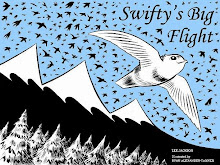Profitable non-profit marketing tips. Organize. Publicize. Capitalize.
Here's some text from a presentation I gave in Vancouver, Washington, in mid-December 2005. It describes -- briefly -- what I believe with regard to communications in support of fundraising. Agree/Disagree? Please feel free to share your comments.
Who is Than Clevenger?
20 years of marketing communications experience (i.e., telling stories to gain people’s trust and get them to act).
Focus on corporate marketing strategies.
Clients have included Fortune 100 CEO’s, foreign governments and NGO’s. Brands include: Kodak, Prodigy, Lockheed Martin, Gulfstream Aerospace, Proctor and Gamble, Xerox, Crate & Barrel, the USOC, etc. Speeches for Bill Cosby, two former Mayors of Washington, D.C., Olympic Athletes, etc. Worked for The Red Cross, the American Task Force for Bosnia, etc. Currently helping Morrison Child and Family Services, Boys and Girls Clubs of Portland, Friends of Forest Park and Oregon Trout, among others.
Expertise in creative marketing strategies for a variety of organizations.
Personal interests: military history, art, sailboat racing, my family.
Favorite quote: “I would rather be the victim of man’s occasional infidelities against his fellow man rather than relinquish my belief in the goodness of all men.” Thomas Jefferson.
What have I learned?
No single marketing effort is more important than list development and maintenance. It’s a detailed, menial task, but the most critical. If you don’t love your list, who will?
You don’t get what you don’t ask for. Ask for the money.
Few people know how to use technology to build community. We talk about what we want to send to our donors, board, etc. But, we rarely talk about what it is they really want to see and hear. Creating feedback mechanisms is critical to building and maintaining community around an issue or product.
Examples: YourselfFitness.com, commissionersam.com
Your board is there to support you and your organization’s mission, not the other way around. Executive directors need to be bolder decision-makers and leaders. Time is not on your side.
Emerging Trends.
There is plenty of research and academic discussion on so-called “new philanthropy.” It’s like “new environmentalism.” It’s really nothing more than an approach that is based on collaboration and partnership, rather than one-way giving (i.e., You ask. I give. End of transaction. See you next year). Instead, we must create two-way processes that are on-going and self-sustaining.
Look at Social Venture Partners. See www.svpportland.org. Organization is creating new models for philanthropy and providing opportunities for “returnment.”
But, as a practical matter, very few organizations are preparing themselves for the inevitability of new philanthropy. Lack of resources (i.e., time) is the primary culprit. The good news: You can get ahead of the curve. You need to know where the curve is heading, though.
Here's what I mean...
Information is moving from static to dynamic. Examples: Newspapers and websites are static. Weblogs are dynamic. Television programming today is static. Interactive television is dynamic. Webtrends data is static. IKnoodle is dymanic.
Let’s talk about www.iKnoodle.com below…
Grant-making organizations are stuck in the 19th century. They don’t have the answers to meet the growing need swiftly enough. Governments will remain under increasing pressure to cut taxes and reduce support for organizations who do not demonstrate a clear return-on-investment. Measurement of everything is de rigeur in this world due to advances in measurement techniques as a result of technology explosion. Business is having to take up the slack as a result of government cut backs and bureacratic red tape by foundations.. The grant submission process is an old paradigm. Partnerships with businesses is the new paradigm. But, many businesses don’t know what to do either.
The drive to measure outcomes is going to get more demanding. Information technologies are creating an unending interest in analytics. Business – your new partner – is completely driven by analytics. See where this is heading?
Commercials are dying. Newspapers are continuing their decades-long slide. It’s not about commercials anymore, it’s about commerce. Tivo, satellite radio, podcasts, etc. are killing the old advertising industry. Imagine a world where you can’t get your message out through traditional broadcast channels. How are you going to tell the world what you need or what you do? You are going to have to build your own networks. Which means you are going to have to be a trusted source of information.
Marshall McLuhan’s theories are being sorely tested. The message is equally as influential as the medium due to the ability to provide feedback instantly. This trend is accelerating.
Everyone can conduct a survey. Let’s face it, we are as a species survey crazy. We love polls and can’t get enough of them. But, poll data is no substitute for real leadership and never will be. You must resist the urge to poll too often.
iKnoodle.
A technology in which I am particularly interested.
Their goal: use technology to support communities; enable non-profits to meet an audience that might not be able to write a big check, but does want to help.
iKnoodle partners with non-profits and splits the revenues 50/50.
Go to www.iKnoodle.com to download the browser tool.
Go to www.morrisonkids.org to see how it works.
It’s a virtual coupon book. Not so enamored of the restaurant deals. But, do like the links to national retailers like Macy’s, Office Depot, Discovery Store, Powell’s Books, Best Buy, Dockers, Blockbuster, Dell, etc.
Provides the non-profit with a private-label (branded) Internet Explorer web browser tool bar. The non-profit still has to market the toolbar to its membership base. But, it creates a passive revenue stream for the non-profit.
Potential to, on average, drive $100 per year, per member, back to the non-profit.
See also, www.upromise.com for an example of what larger companies are doing.













